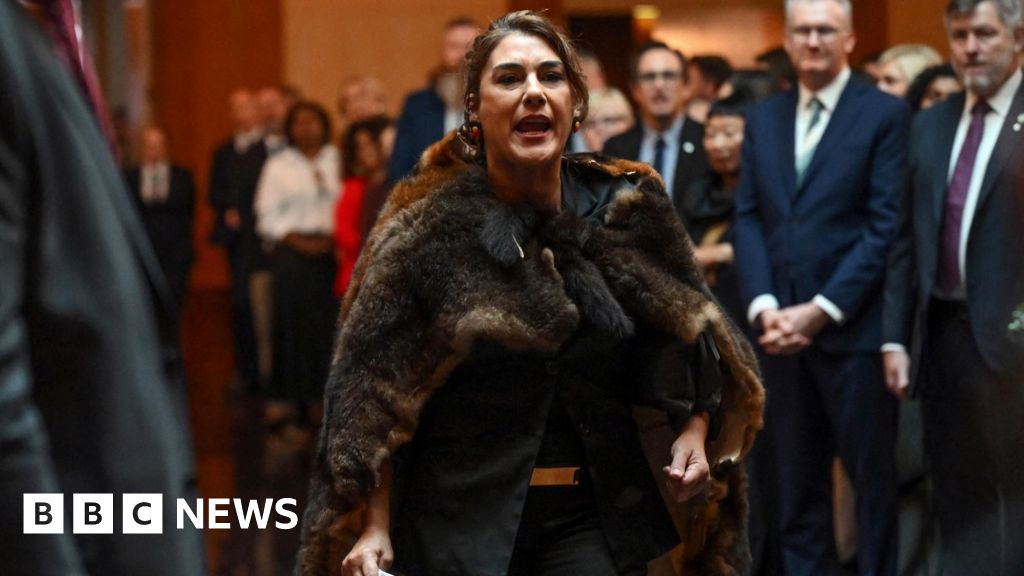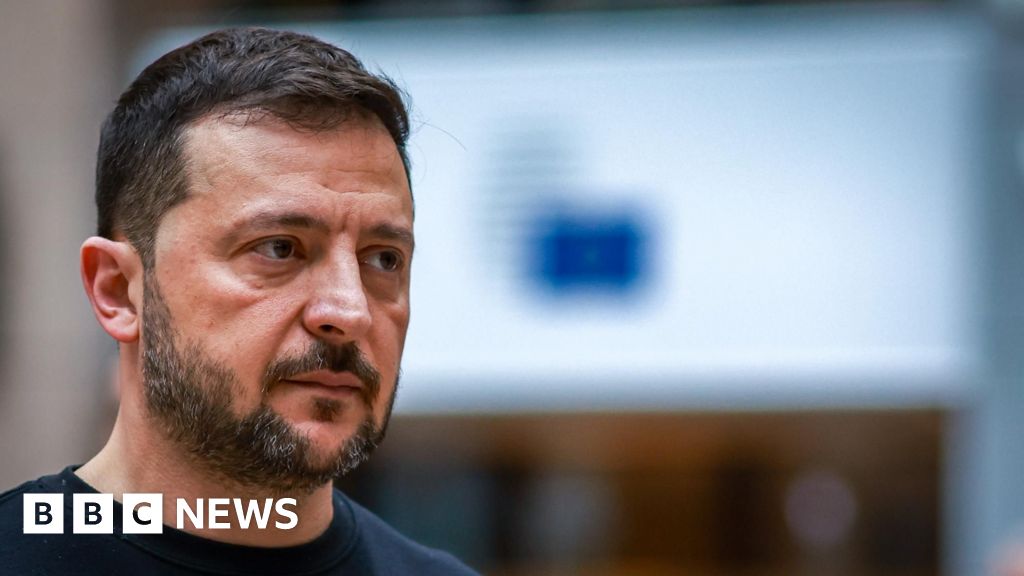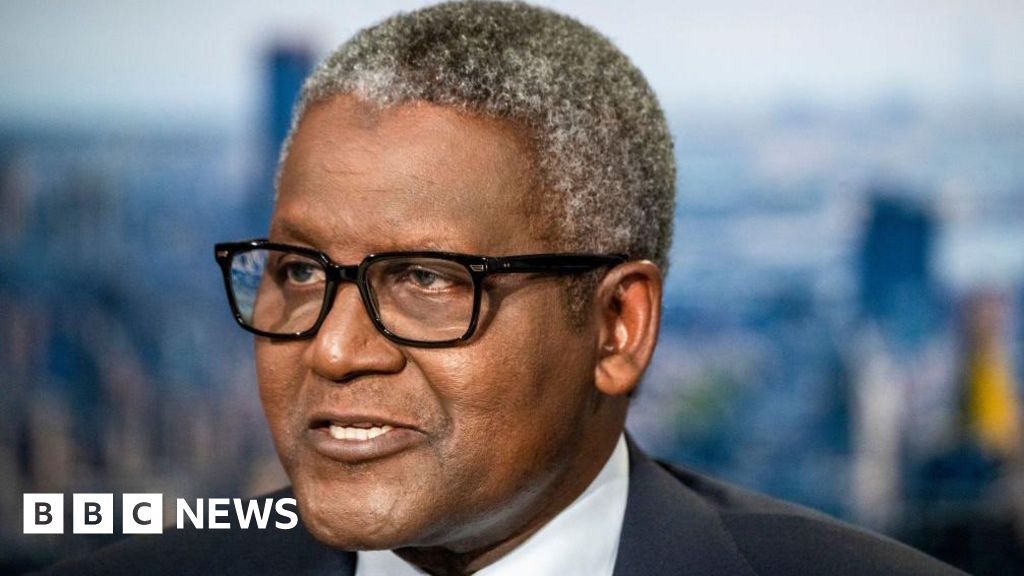ARTICLE AD BOX
By Laurence Peter
BBC News
Image source, Reuters
Image caption,Ukraine's MiG-29s are not as advanced as some of Russia's fighters
Ukraine's fighter pilots are vastly outnumbered by the Russians, and have become legendary - thanks in part to the story of an alleged flying ace called "Ghost of Kyiv".
This hero is said to have downed as many as 40 enemy planes - an incredible feat in an arena where Russia controls the skies.
But now the Ukraine Air Force Command has warned on Facebook that the "Ghost of Kyiv is a superhero-legend whose character was created by Ukrainians!"
"We ask the Ukrainian community not to neglect the basic rules of information hygiene," the message said, urging people to "check the sources of information, before spreading it".
Earlier reports had named the ace as Major Stepan Tarabalka, 29. The authorities confirmed that he was killed in combat on 13 March and honoured with a Hero of Ukraine medal posthumously.
Now, the air force stresses that "Tarabalka is not 'Ghost of Kiev', and he did not hit 40 planes".
It describes the "Ghost of Kyiv" as "a collective image of pilots of the Air Force's 40th tactical aviation brigade, who defend the sky over the capital", rather than a single man's combat record.
For weeks, Ukrainians did not have a name to go with the "Ghost of Kyiv" - but that did not stop the story going viral on social media.
It was used as a marketing brand by a Ukrainian model aircraft manufacturer, while Ukrainian Iryna Kostyrenko showed off a military badge inspired by the legend.
And the defence ministry tweeted a video celebrating Tarabalka's heroism.
🕯13 березня 2022 року під час повітряного бою з переважаючими силами 🇷🇺 загарбників «пішов у небо» майор Степан Тарабалка.
⁰🎖За захист повітряного простору, доблесть і відвагу майору Степану Тарабалці присвоєно звання «Герой України» (посмертно). pic.twitter.com/otjqT32ZP4
The BBC is not responsible for the content of external sites.View original tweet on Twitter
Military experts told the BBC they doubted that one pilot could have downed as many as 40 Russian planes.
Ukrainian military historian Mikhail Zhirohov described the Ghost of Kyiv story as "propaganda for raising morale". Speaking to the BBC from Chernihiv, he said that early on in the war the Russians dominated Ukrainian airspace, so a Ukrainian pilot "could only shoot down two or three".
"It's essential to have this propaganda, because our armed forces are smaller, and many think we can't be equal to them [the Russians]. We need this in wartime," he said.
The fact that Ukrainian pilots are still denying Russia total mastery of the skies, flying inferior, older Russian-designed MiG-29s, inspired this modern legend.
With all its military might, Russia has had more than two months to knock out Ukraine's air defences - and failed.
The Ukrainian authorities fuelled the Ghost of Kyiv legend just days into the war.
The Ukraine Security Service (SBU) showed a fighter pilot on the Telegram messaging service, with a caption calling the "Ghost of Kyiv" an "angel" for downing 10 Russian planes. But it did not name the "angel", and media reports later said the photo used was an old one.
Image source, SBU
Image caption,On 27 February Ukraine called the "Ghost of Kyiv" an "angel" for downing 10 Russian planes
A Ukrainian military expert who requested anonymity told the BBC the Ghost of Kyiv story "has helped to raise morale at a time when people need simple stories".
Ukraine's morale has also been boosted by the Moskva story.
First, Ukrainian border guards defied the Russian missile cruiser with a rude gesture, commemorated with a popular postage stamp. Then Ukraine allegedly sank it - the pride of Russia's Black Sea Fleet - with two Neptune missiles. Russia admitted there was a fire on board, and that the ship sank, but made no mention of a missile attack.
Heroic fighter pilots have entered the national mythology of other countries too. The UK celebrates the brave Royal Air Force pilots who outwitted the mighty Nazi Luftwaffe in the 1940 Battle of Britain.
And Russia itself glorifies the sacrifices of its World War Two pilots, who were outgunned by the Germans. Some deliberately crashed into enemy planes after running out of bullets.
Legends like the Ghost of Kyiv are not surprising when there are such contrasting figures given for Russian and Ukrainian losses: there is plenty of room for embellishment.
On 30 April, the Ukrainian Armed Forces General Staff said that in the war so far Russia had lost 190 planes and 155 helicopters.
But independent military analysts Oryx reckon the Russian losses to be 26 planes and 39 helicopters, as well as 48 drones (UAVs).
Both Russia and Ukraine are very secretive about their own losses. Counting is difficult, because aircraft often crash in Russian-held territory, and some manage to land in Russia.
Image source, Getty Images
Image caption,Portable anti-aircraft missiles are a key part of defending the skies
Experts agree that in most cases Russian aircraft were downed with surface-to-air missiles, especially man-portable air defence systems (Manpads).
Justin Crump of the security consultancy Sybilline says the Ghost of Kyiv legend is important because in our social media age "people need myths, heroes and legends, to provide cohesion and meaning".

 2 years ago
28
2 years ago
28








 English (US)
English (US)